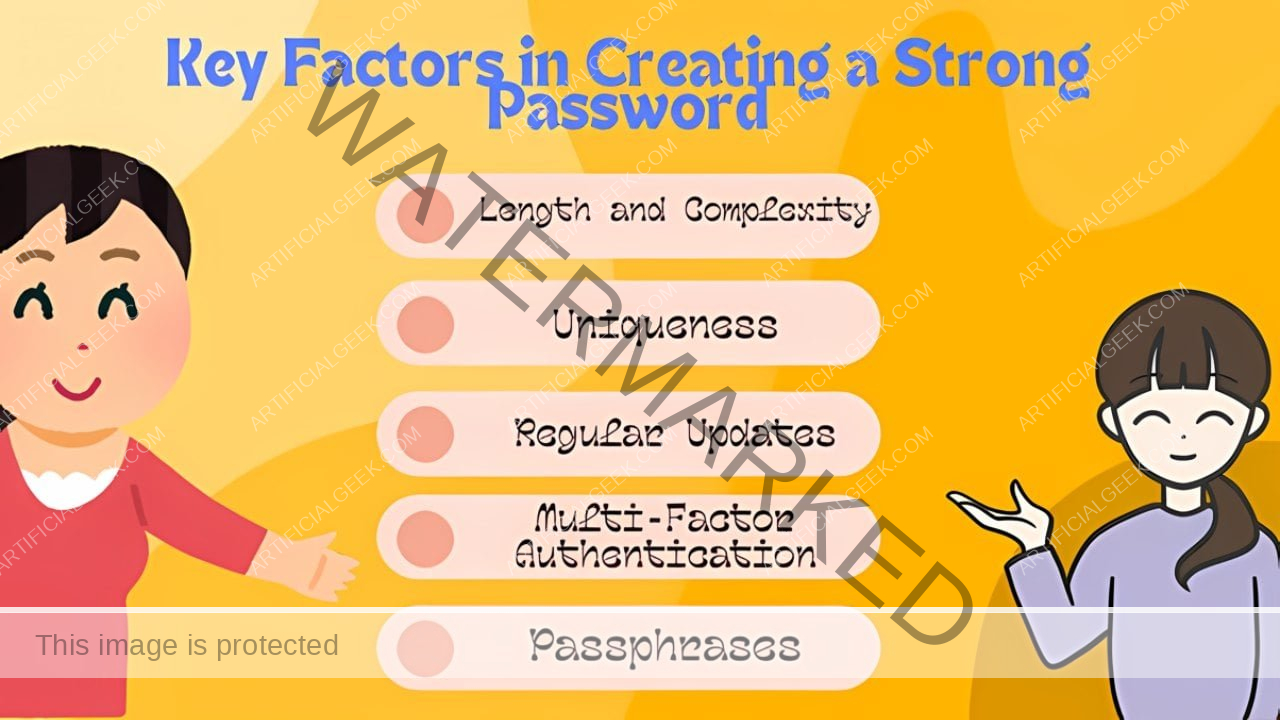In early 2024, a major social media platform reported a massive data breach that affected millions of users worldwide. This breach exposed personal information, leading to widespread concern over cyber security and the importance of creating strong passwords. In today’s digital age, passwords are our first line of defence against cyber threats. Yet, many people still use weak, easily guessable passwords, putting their personal information at risk.
Creating a strong password isn’t just a good idea—it’s a necessity. In this article, we’ll dive into how to create a strong password in 2024 and key factors that impact cyber security, including securing your social media accounts, and discuss the trade-offs involved in balancing different factors. We’ll also explore the challenges associated with different approaches and provide practical tips on how to make strong passwords in 2024. Let’s get started!
The Importance of Strong Passwords
Why Strong Passwords Matter
Passwords protect our online identities, financial information, and personal data. Weak passwords are easily compromised, leading to identity theft, financial loss, and other serious consequences. A strong password acts as a robust barrier against unauthorized access, making it significantly harder for cybercriminals to infiltrate your accounts.
Recent Cyber Security Incidents
The recent breach in early 2024 serves as a stark reminder of the importance of strong passwords. According to Security Magazine, the breach exposed usernames, email addresses, and even hashed passwords, prompting millions of users to change their passwords immediately. This incident highlights the ongoing risks and underscores the need for vigilant password practices.
Mobile Device Security
In addition to creating strong passwords, it’s crucial to secure your mobile devices. Mobile devices often store sensitive information and are used to access various accounts, making them a prime target for cybercriminals. For comprehensive guidance on protecting your mobile devices and data, check out this guide to mobile device security and data protection.
Key Factors in Creating a Strong Password

Creating a strong password involves several key factors: length, complexity, uniqueness, and regular updates. Let’s break these down in detail.
Length and Complexity
Length: The longer the password, the better. A minimum of 12 characters is recommended, but 16-20 characters provide even more security. Long passwords are harder to crack because they increase the number of possible combinations.
Complexity: A strong password should include a mix of uppercase and lowercase letters, numbers, and special characters. Avoid common words, sequences, or easily guessable information like birthdays or simple sequences (e.g., “123456”).
Example: Instead of “Password123,” use something like “G7!hP@92#kLt$”
Uniqueness
Avoid Reuse: Using the same password across multiple sites increases vulnerability. If one account is compromised, others are at risk. Each account should have a unique password.
Randomness: Passwords should not follow predictable patterns. Tools like password managers can generate and store random, unique passwords for each account.
Example: Use a password manager to generate something like “T8z#M4b&J2!pK9q”
Regular Updates
Frequent Changes: Regularly updating passwords reduces the risk of long-term exposure. Even strong passwords should be changed periodically, especially if a breach is suspected.
Monitor Breaches: Stay informed about security breaches. If a service you use is compromised, change your password immediately.
Balancing Security and Usability
Creating and maintaining strong passwords can be challenging, particularly when balancing security with usability. Here are some trade-offs and challenges to consider:
Convenience vs. Security
Memorability: Complex and lengthy passwords can be difficult to remember, leading to the temptation of writing them down or storing them insecurely.
Password Managers: These tools offer a solution by securely storing and generating passwords. However, reliance on a password manager requires trusting the security of the tool itself.
Example: LastPass, 1Password, and Dashlane are popular password managers that can help generate and store strong passwords.
Multi-Factor Authentication (MFA)
Enhanced Security: MFA adds an extra layer of security by requiring a second form of verification (e.g., a code sent to your phone) in addition to the password.
User Experience: While MFA significantly improves security, it can also complicate the login process, potentially frustrating users.
Example: Google Authenticator and Authy are popular MFA apps that provide an extra layer of security.
Passphrases: A Practical Alternative
What Are Passphrases?
Passphrases are longer sequences of words that form a memorable sentence or phrase. They are easier to remember and type than complex passwords while providing robust security due to their length and unpredictability.
Creating a Strong Passphrase
Length: Aim for a passphrase of at least 16-20 characters.
Complexity: Use a mix of unrelated words and include numbers or special characters for added security.
Example: “PurpleTurtle42!DancesOnMars”
Benefits of Passphrases
Passphrases offer a balance between security and usability. They are harder to crack due to their length and easier to remember than random character strings.
Best Password Generators in 2024
Using a password generator is one of the easiest ways to create strong, unique passwords. Here are some of the best options available in 2024:
LastPass
Features: LastPass offers a built-in password generator that creates strong, random passwords. It also securely stores passwords and syncs them across devices.
Pros: User-friendly interface, robust security features, free version available.
Cons: Recent security concerns have raised questions about trustworthiness.
1Password
Features: 1Password generates and stores strong passwords. It also includes a password strength meter and supports MFA.
Pros: Excellent security features, user-friendly, supports multiple platforms.
Cons: Subscription-based service.
Dashlane
Features: Dashlane generates strong passwords and offers secure storage. It also includes a dark web monitoring feature.
Pros: Comprehensive security features, user-friendly, dark web monitoring.
Cons: Higher cost compared to other password managers.
Securing Social Media Accounts
Social Media-Specific Risks
Social media accounts are prime targets for hackers due to the wealth of personal information they contain. A compromised social media account can lead to identity theft, phishing attacks, and unauthorized access to other linked accounts.
Best Practices for Social Media Security
- Enable MFA: Always enable MFA for social media accounts to add an extra layer of security.
- Review Privacy Settings: Regularly update privacy settings to control who can see your information.
- Be Cautious with Links: Avoid clicking on suspicious links or downloading attachments from unknown sources.
- Use Strong, Unique Passwords: Ensure your social media passwords follow the guidelines for length, complexity, and uniqueness.
The Role of Education and Awareness
Raising Awareness
Many people still underestimate the importance of strong passwords. Educational campaigns and awareness programs can help individuals understand the risks and adopt better password practices.
Training Programs
Organizations should provide training programs to educate employees about cyber security, including the importance of strong passwords and how to create them.
Conclusion
Creating a strong password in 2024 involves balancing multiple factors to ensure maximum security without sacrificing usability. By focusing on length, complexity, uniqueness, and regular updates, while incorporating tools like password managers and MFA, individuals can significantly enhance their cyber security. Staying informed about recent trends and adopting best practices for social media security are crucial steps in protecting personal information online. As cyber threats continue to evolve, prioritizing robust password practices will remain essential in safeguarding digital identities.
By understanding the importance of strong passwords and implementing the strategies outlined in this article, users can take proactive steps to protect themselves from cyber threats. Remember, a small investment in creating and maintaining strong passwords can prevent significant security breaches and their associated consequences.
By following the guidelines and using the tools mentioned in this article, you can significantly improve your online security and protect your personal information from cyber threats. Stay safe and stay informed!


